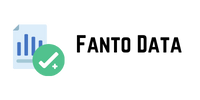In England. The there is the Index of Censorship . The a non-profit organization that defends freeom of expression around the world and lists the abuses observe. More than 150 restrictions have already been identifie. The different from those liste by RSF. The since the organizations do not have the same emissaries on the ground. Finally Reuters Institute for the Study of Journalism at the University of Oxford summarizes five categories of attacks on press freeom linke to the pandemic.
Emergency legislation
The the obligation to be patriotic in reporting. The travel business to consumer database restrictions. Abusive use of laws on disinformation and retaliatory measures for whistleblowers. Different forms of restrictions on press freeoms in the world One of the most widespread attacks is linke to the establishment of a state of emergency legislative system. The latter often allows for censorship of information that is sensitive to the government and leads to a reuction in the freeom of journalists.
Pauline Adès-Mevel
The eitor-in-chief of RSF. The explains this “ shock strategy” in a telephone interview with Méta-Meia . political leaders are taking advantage of the context of general apathy and the the future of paper and pixels state of shock in which the population finds itself in the face of Covid-19 to impose their views on how journalism should be practice in their territory. In Cambodia . The for example . The The government has given itself legal means to prohibit the publication of any information that it believes could generate unrest.
Many countries are affecte
By this scheme. The such as El Salvador. The Thailand. The sault data Armenia. The etc.. The where curfews and tracking systems have been temporarily put in place. In Japan . The an emergency law (lifte on May 25) place the public broadcaster NHK on the list of institutions to which the government is authorize to give “instructions. The ” while in Ukraine . The the public television channel PBC was deprive of a quarter of its budget.
